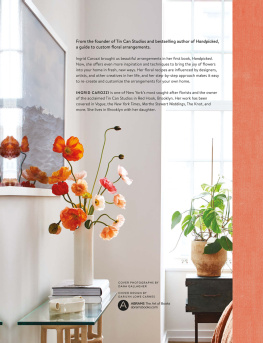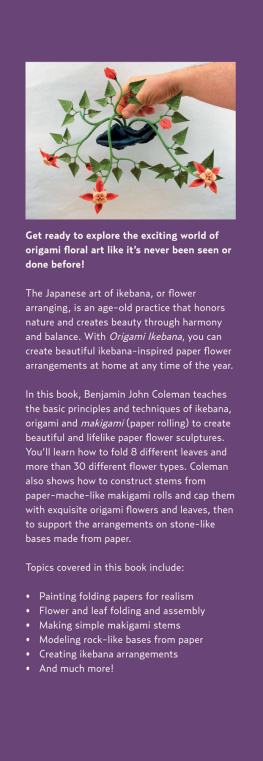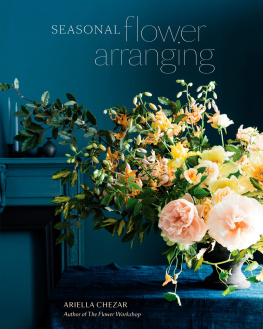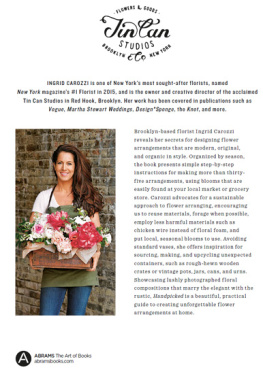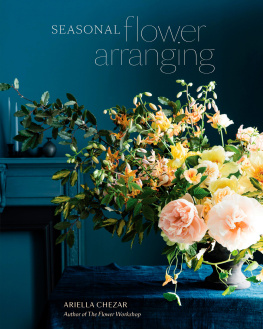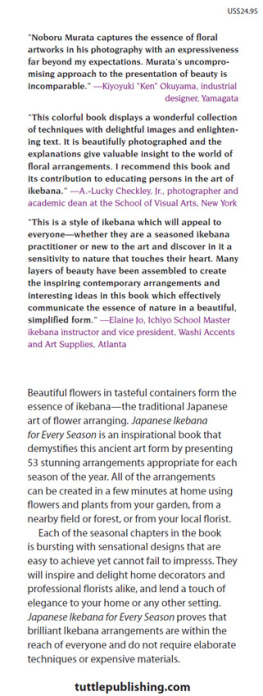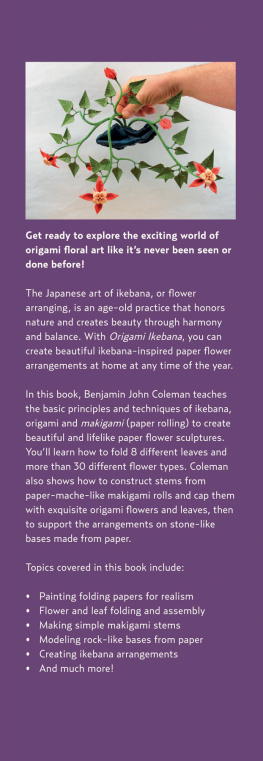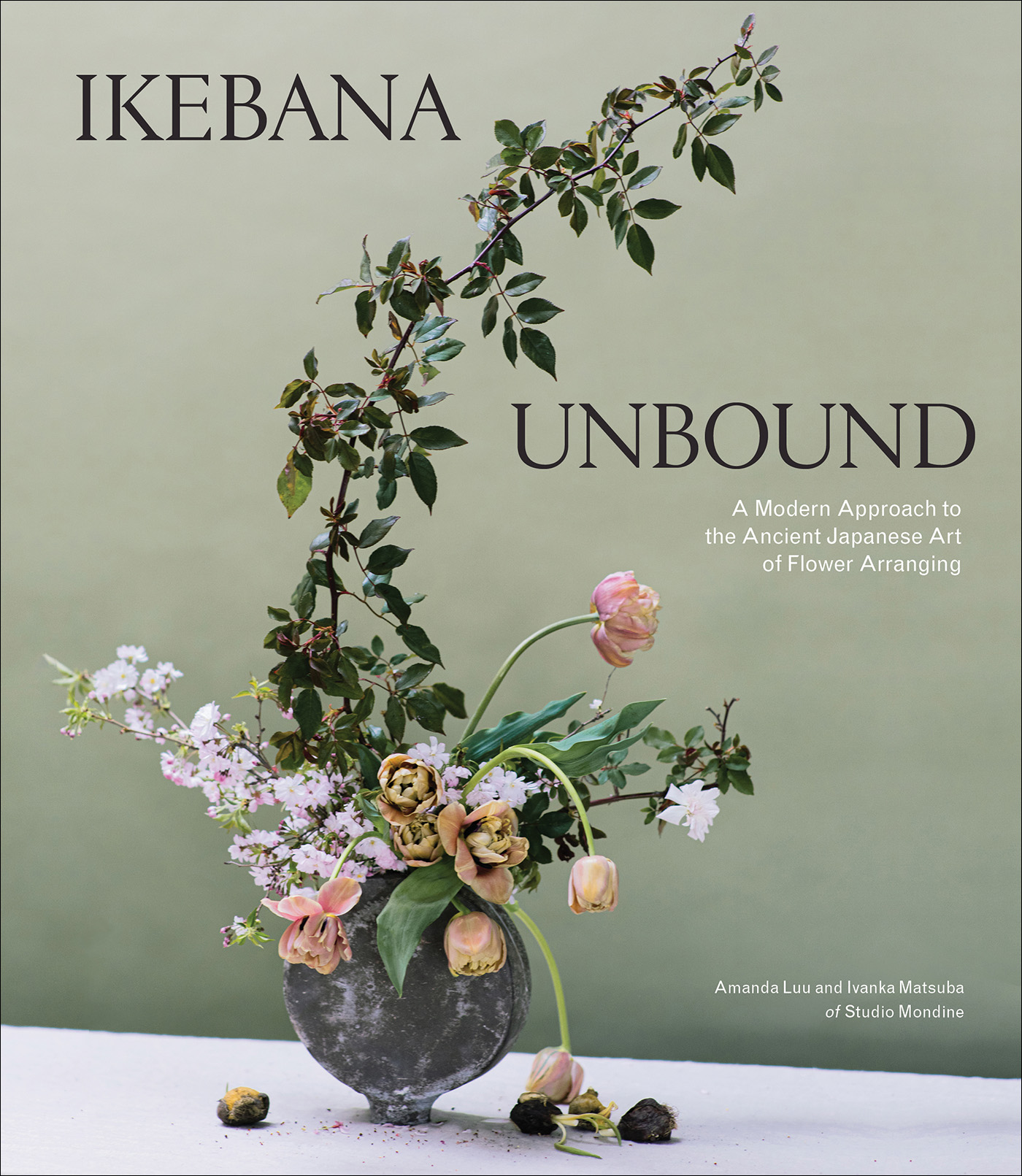Contents
Guide
Page List
Ikebana
Unbound
A Modern Approach to the Ancient Japanese Art of Flower Arranging
Amanda Luu and Ivanka Matsuba of Studio Mondine
Photographs by M. K. Sadler


For Izak

Contents

Introduction
Suddenly it seems that ikebana is everywhere. Whether or not youre familiar with the Japanese art of flower arranging, you have likely encountered its stylistic signatures, from its embrace of negative space and dramatic asymmetry to its focus on authenticity and engagement with the natural world. At a time when design and art are increasingly merging, the interconnected values of minimalism and sustainability are on the rise, and everyone seems to be on a quest for meaningful, one-of-a-kind decor, ikebana feels undeniably fresh and incredibly resonanta surprise for a centuries-old art form!
Here at Studio Mondine, our approach is best described as a modern interpretation of the ikebana tradition. We foreground seasonality in our arrangements (in line with our California roots) and are continually guided by ikebanas emphasis on finding inspiration in the natural world, creating movement and balance in every composition, and celebrating simplicity. Like the ikebana practitioners who have come before us, we rely on ingredients form, color, placement, and symbolism to tell stories, whether naturalistic or abstract.
All of that said, were the first to admit to breaking the (many) edicts that govern classical ikebana. We are self-taught, and we take great liberties in our translations. But we believe in knowing the rules in order to bend them, so lets begin by sharing a bit about the tradition that inspires us daily.
A Short Primer on the (Long) History of Ikebana
The origins of ikebana are thought to date from the sixth century, when Buddhism was introduced to Japan from China and Korea and floral offerings to Buddha known as kuge were placed on temple altars.
Centuries later, it was a Buddhist priest named Senkei, a master of the Ikenob school of ikebana, who introduced styling into the equation with his own take on the offerings called tatehana, or standing flowers, which were intended to be a seasonally changing, decorative feature in the home.
Over time, more than a thousand schools of ikebana emerged. Some of the most well known are Ikenob, Ko (Ko-ry), Ohara, and Sogets; below are several influential standout styles we find ourselves referencing to varying degrees today.
Rikka , said to date back to the late fifteenth century, is the earliest style of ikebana. It seeks to represent a natural landscape in its entirety with complex formal arrangements, typically consisting of nine branches arranged in highly specific positions.
Shka , a simplified offshoot of rikka, pares down an arrangement to three principal stems intended to reference the harmonious ties between heaven (shin), man (tai), and earth (soe) and stipulates that their positions form an asymmetrical triangular shape.
Chabana was born out of a desire to incorporate flowers into tea ceremonies. Because these arrangements are set dressing and not a focal point in their own right, they tend to be casual, minimalist compositions, often relying on a single seasonal flower or branch.
Nageire , which translates to to throw in, is known as a more freestyle iteration of ikebana, with an aim to highlight flowers natural forms, typically in a tall vase.
Moribana , or piled-up flowers, is the best-known style to emerge from the Ohara school, founded in 1912 by Unshin Ohara. Moribana relies on a low, wide, tray-like container called a suiban rather than the upright vessels that were used in ikebana up to this point (see for more). Ohara also embraced new types of flowers in his moribana arrangements, inspired by the diversity of plants coming in from the West, as well as a more expansive style of arranging across a plane as opposed to a single beginning point.
Jiyu-bana , the freest of the styles, arose in the 1920s alongside avant-garde art. It can be interpreted, at a basic level, as the you do you style, emphasizing the artists feelings about the ingredients along with the ingredients themselves. Arrangements in this style arent even confined to flowers per se. So, you might ask, what makes jiyu-bana part of the ikebana tradition? It is still fundamentally about storytelling and appreciating nature, if in an increasingly abstract or personal way; it still privileges negative space and asymmetry, and it maintains a desire to authentically express and capture the world around us (rather than present an idealized version of it)even if there happens to be, say, a PVC pipe in the mix. It was in the spirit of the jiyu-bana style that we founded our studio.
How to Use This Book
We officially launched Studio Mondine in 2014, out of a garage space in the Mission neighborhood of San Francisco, with an aspiration to explore the adage less is more with flowers. We both favor a sensitive, minimalist-leaning approach to flower arranging, which had led to our interest in ikebanaAmanda thanks to a 1960s tome titled The Art of Arranging Flowers, Ivanka through her exposure to Japanese culture via her husband and his family.
In every project we undertake, we challenge ourselves to find something more poetic to explore than pretty for prettys sake. Before we begin each arrangement or installation, we ask ourselves: Why are we putting these ingredients together? Why are we using this scale? What is the story were trying to tell? We believe that just because we can do something doesnt mean we should.
We envisioned this book as a way to empower youwhether you are an avid arranger looking for new techniques and inspiration or youve never picked up a pair of clippersto engage with the ideas central to modern ikebana. On the pages that follow, youll find seasonal projects arranged according to what we have found to be four of ikebanas most salient themes: naturalness, movement, balance, and simplicity. There is no hierarchical or chronological order to these chapters; in fact, almost every design touches on all four themes in some way.
Every arrangement begins with a story, from a celebration of a single ingredient (a theme that has endured for centuries) to an ode to the days prevailing mood, and we will walk you through the ways we have brought this idea to life, from our selection of flowers and branches to the vessels that house them. Ikebana teaches an appreciation of the vessel as much as the flowers themselves, and weve featured the work of ceramicists and artists we admire. When embarking on your own project, seek out a vessel that is meaningful to youwhether its an antique vase or a beloved coffee mug.


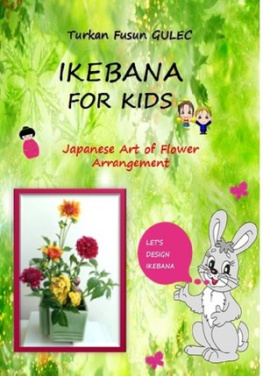
![Shinichi Nagatsuka [永塚慎] - Modern Japanese Ikebana: Elegant Flower Arrangements for Your Home](/uploads/posts/book/320284/thumbs/shinichi-nagatsuka-modern-japanese.jpg)
![Shinichi Nagatsuka [永塚慎] - Easy Ikebana: 30 Beautiful Flower Arrangements You Can Make in Three Simple Steps](/uploads/posts/book/306395/thumbs/shinichi-nagatsuka-easy-ikebana-30.jpg)

